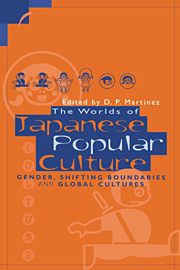Chapter 3 - Akira, Postmodernism and Resistance
Published online by Cambridge University Press: 22 September 2009
Summary
Contemporary urban style is empowering to the subordinate for it asserts their right to manipulate the signifiers of the dominant ideology in a way that frees them from that ideological practice and opens them up to the subcultural and oppositional uses.
(Fiske 1991: 253)Introduction
This chapter is concerned with a textual analysis of Akira (1988), the highly successful cyberpunk film created by Otomo Katsuhiro. This analysis is an exploration of the complex systems of codes and practices employed by the film and the spectator in the creation of meaning; however its main emphasis will be on the perspective of the spectator. As with most commercial films produced by the Japanese studio system, Akira (Tôhô Studios) is aimed at a specific audience: adolescent males who are fully conversant with the codes and cultural systems employed in the film. Therefore, to reach an understanding of how a Japanese adolescent male creates meaning (and so derives pleasure) from Akira involves not only an understanding of the uses the film makes of other textual systems, but also an understanding of the position occupied by some adolescent males in Japanese society.
The aim of this chapter, then, is twofold: first, to come to an understanding of Akira from the point of view of its intertextuality; and second, to present an interpretation of the film as a point of convergence of the spectator-film-culture nexus.
- Type
- Chapter
- Information
- The Worlds of Japanese Popular CultureGender, Shifting Boundaries and Global Cultures, pp. 56 - 74Publisher: Cambridge University PressPrint publication year: 1998
- 3
- Cited by

